Nicole Dyer’s pilgrimage through modern life at age 25
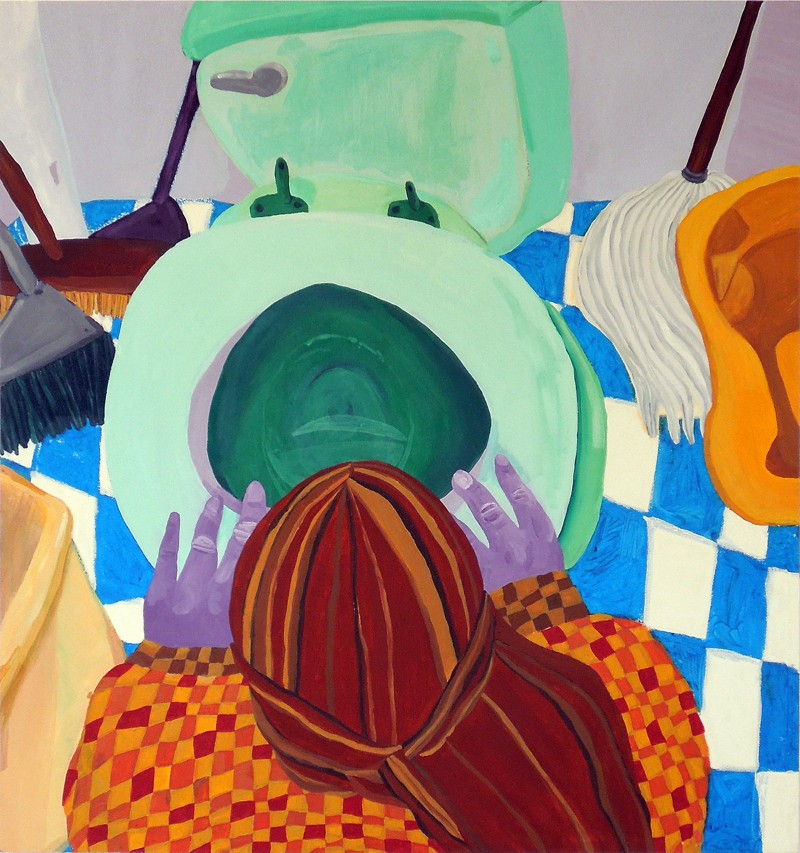
Nicole Dyer’s paintings are intensely personal and emotional. There is a lot of cuddling, coupling, and slightly more and less intimate forms of physical communication between human beings, depicted in her work. Bodies wrapped together. Lonely rumpled beds the morning after. There is connection and disconnection, love and loss. The complex, lovesick life of young woman searching, stepping out. Dyer’s “25 Is A Good Year To Start Making Bad Decisions” may be emblematic of her personal struggles, and “First Crush” of her yearnings, and I’m sure they are, but, as I discuss below, I found the hands in her paintings the most provocative aspect of her work. If the question is whether, at 25, she has been making bad decisions in her painting, my answer is that I do not think so.
I think it unfair to compare, as some have, this young artist’s work with Nicole Eisenman’s. Perhaps because of Dyer’s bluntness. Yes, she can be blunt, but there is an innocence to her work and an unself-consciousness (particularly about gender), and perhaps an insecurity, that I think distinguish her from Eisenman.
I actually made an unfair comparison myself: “25 Is A Good Year To Start Making Bad Decisions” reminded me of Dana Schutz’s “Spit” (a study of the old spitting torture), which I wrote about for Artblog. Of course, here we have young Dyer, at an odd angle, apparently relieving herself of one too many over a toilet bowl: an occurrence, like the spitting torture, unique to painting. But notice the hands.
Dyer’s astonishing hands
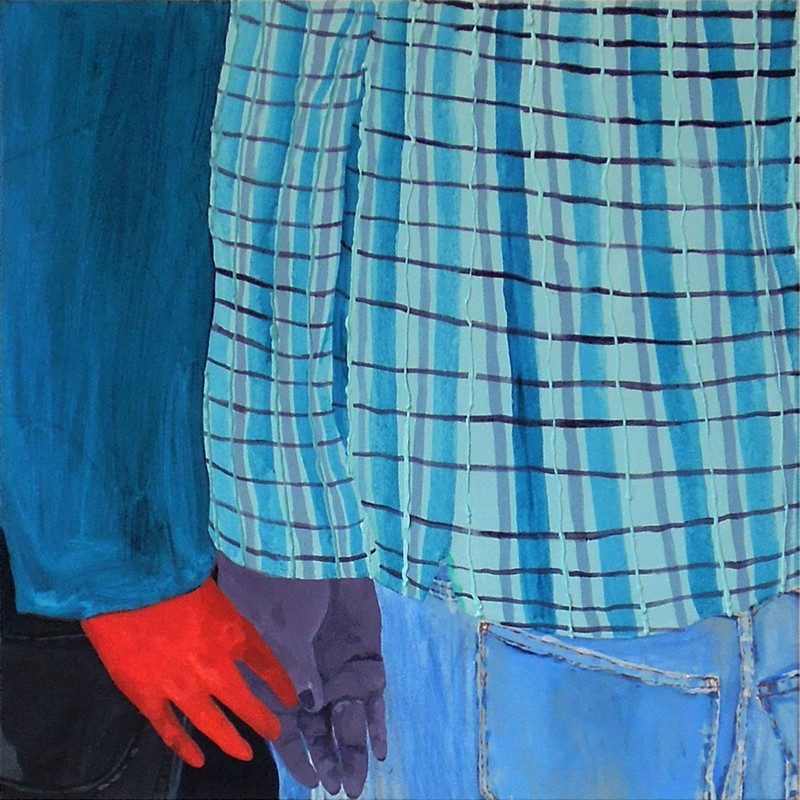
Hands dominate Dyer’s most compelling pieces. They are tender in one piece, as in “First Crush,” clunky, and almost grotesque, in others. In fact, usually they are clunky. They are disturbing here and lovely there. They graze, they clasp, they push, they claw, they embrace, they lie along a table. They are also uniquely colorful and delightful, out of a palette that you’d almost expect to find in an unusual child’s coloring book. The gallery describes them as jewel tones, and they are. Dyer’s work celebrates the absolute expressive power of hands in our lives. As we watch over ourselves, sometimes perhaps dissociated from our own experience, I daresay we rarely concentrate upon our hands, despite the fact that they are such an important part of the picture.
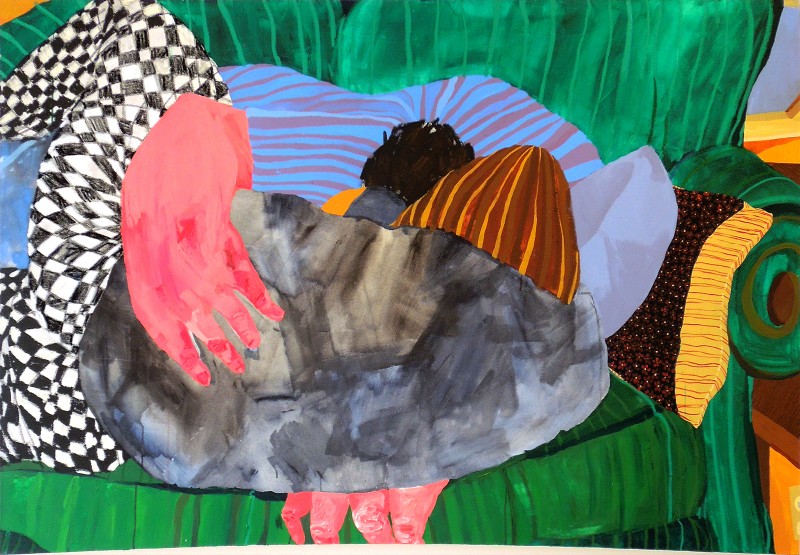
All of this said, Dyer does not yet possess the technical virtuosity of an Eisenman or a Schutz. Not all of her work feels complete: perhaps a reflection of her youth. For example, I felt that there was an element of incongruity in her largest painting in the show, “Sleeping Together,” although, again, hands move the narrative in a slightly shocking direction: from a couple wrapped together in an embrace to a statement that suggests some far more sinister aspect of the interaction.
Still, overall, Dyer’s composition is masterful and unusual, particularly her color and pattern schemes. Her textiles are wonderful too. And she asks questions, universal ones, which may resonate with any of us: she is wide-eyed. This is a painter to be seen and someone to follow.
Dave Eassa’s curious Deck of Cards
Savery has paired Nicole Dyer with Dave Eassa, another young artist working out of Baltimore. Eassa feels more the commentator to Dyer, the actor.
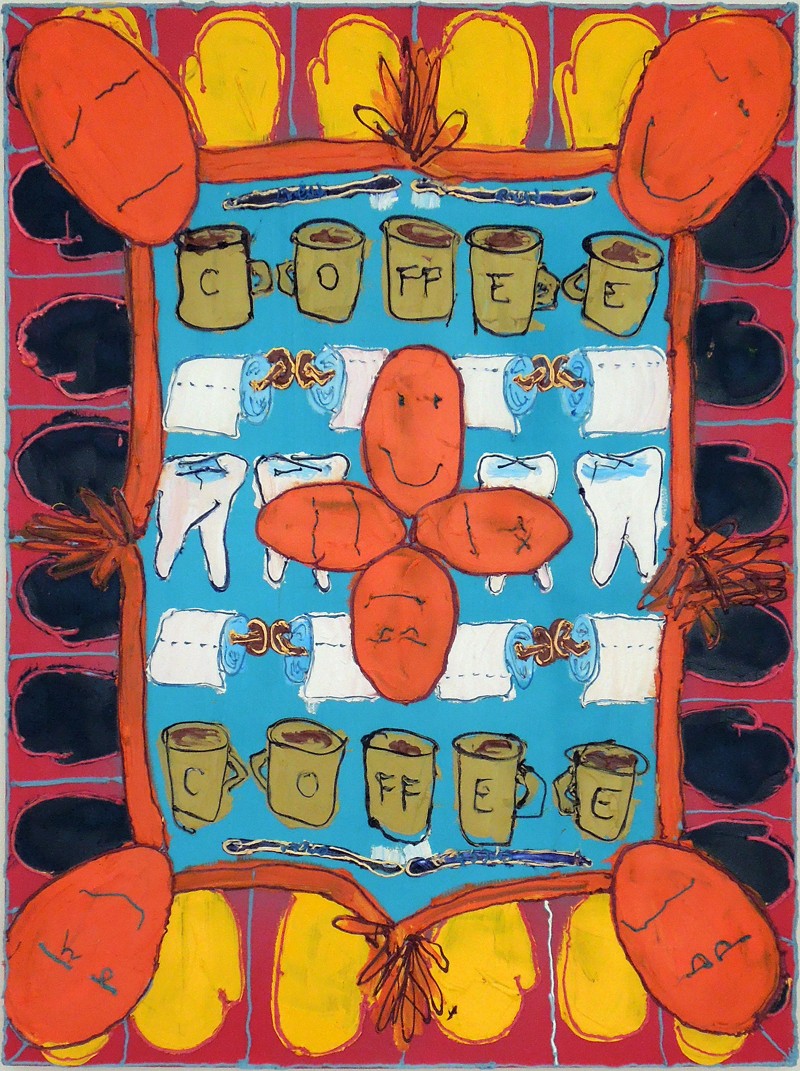
The show features four paintings in Eassa’s Deck of Cards series. They are studies of the prosaic in the form of playing cards, which lightheartedly remind us that, beneath the banal rituals that rule our daily lives, we are all playing a game of chance. When you see the four, you want to see them together with the remaining 48, which I gather do not (yet) exist.
Card players, of course, have long found their way into painting, from Cezanne to David Hockney, and there is a 600-year history of playing-card design, and an industry devoted thereto. But Eassa’s large renditions are thematically distinguishable. For one thing, they are vehicular; they are not simply ends in themselves. For a fascinating contrast to these works, take a trip to the Print Center, which is showing New York-based artist Derrick Adams’ blackface parodies of traditional playing cards, titled Game Changing.
Eassa’s unruly tomcats (actually, I don’t know if they are males, but they might as well be)
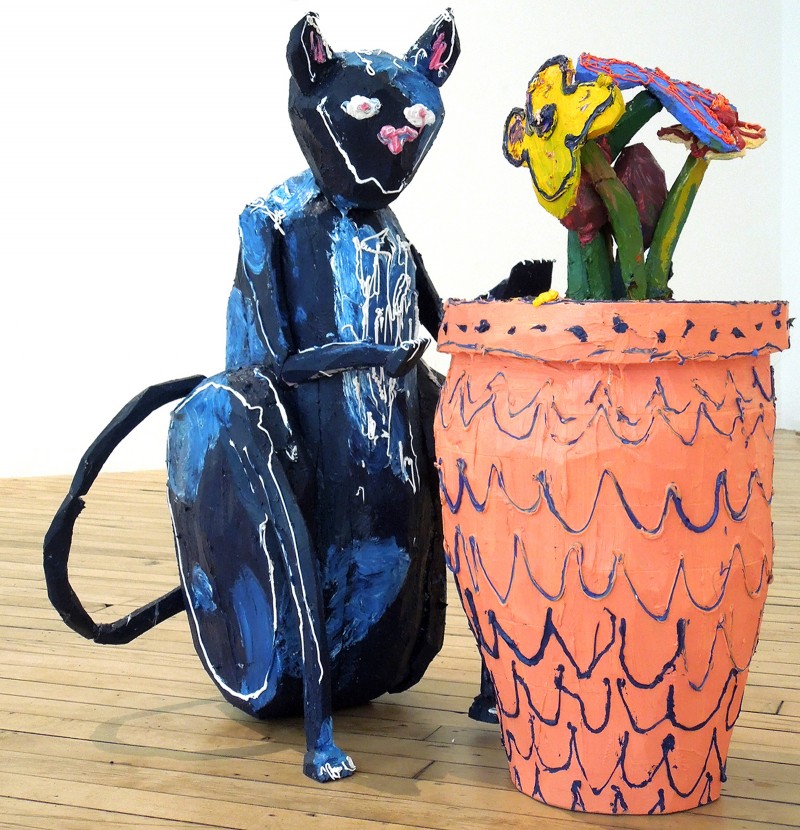
The exhibition also includes a bunch of Eassa’s cat sculptures. Like his paintings, they are richly painted, actually drippy, little guys made of insulation foam. One of them is sitting on a canvas looking down at an outline of its own image, called “A Strong Hold on Self Image”. The others are involved in various forms of harmless mischief, apparently an expression of Eassa’s rebelliousness. Subjectively speaking (and trying to suppress my bias against cats), they’re slightly amusing, but not captivating.
Thank you, Savery, for having the foresight and courage to feature the work of these two emerging artists. The show will be up through Saturday, Feb. 27.







